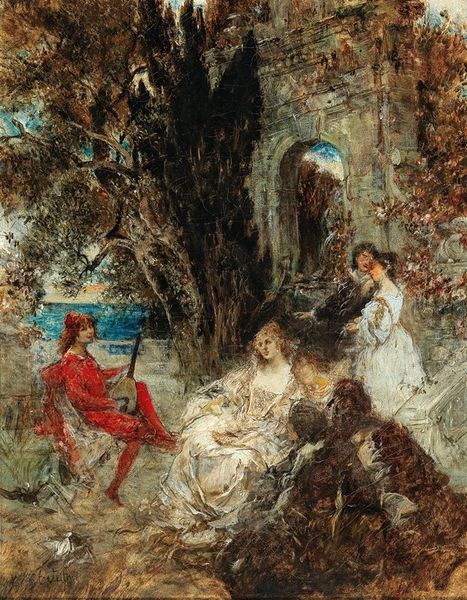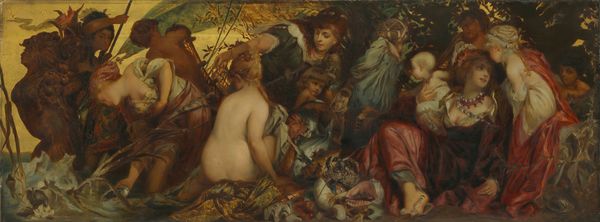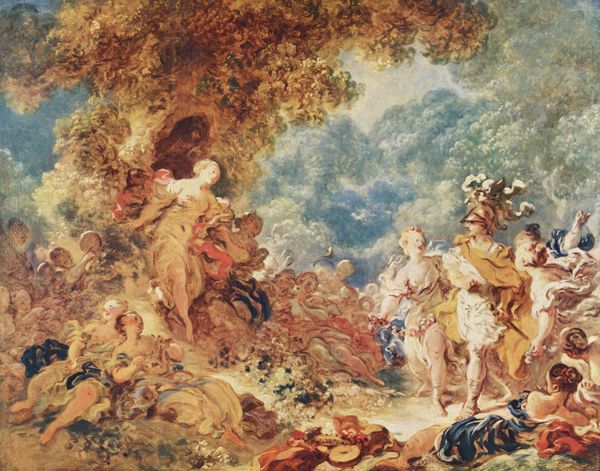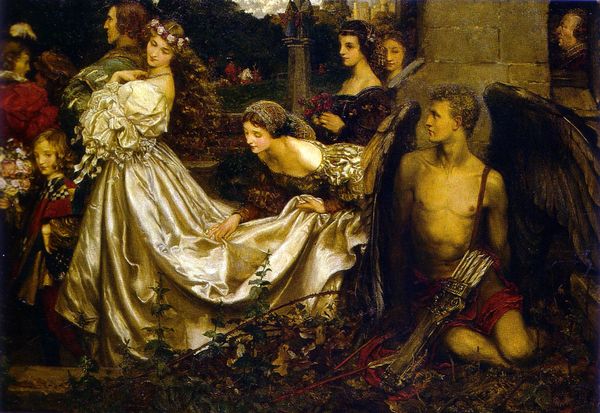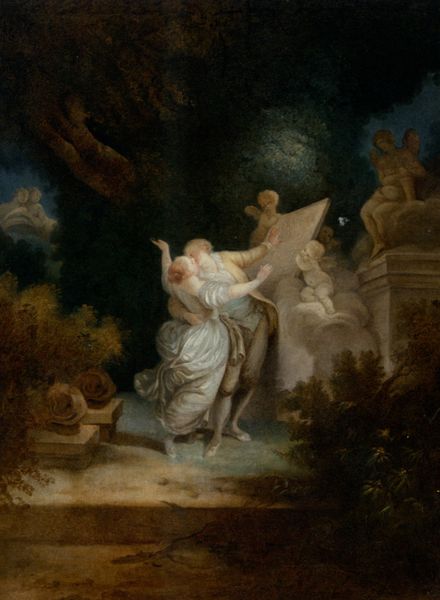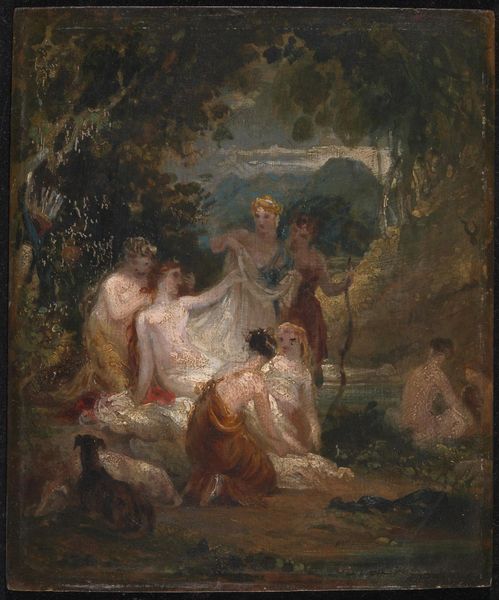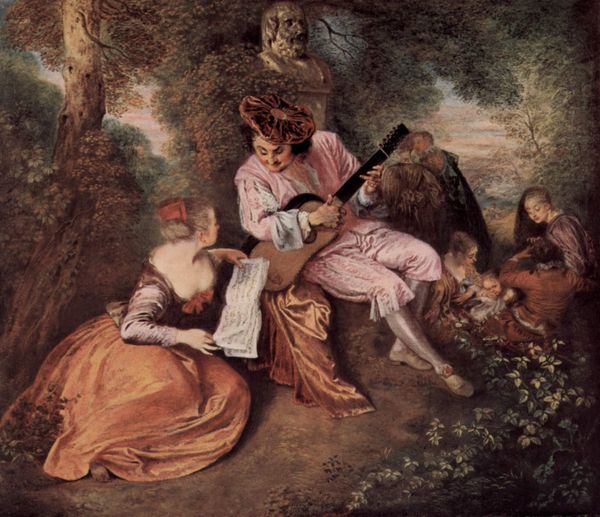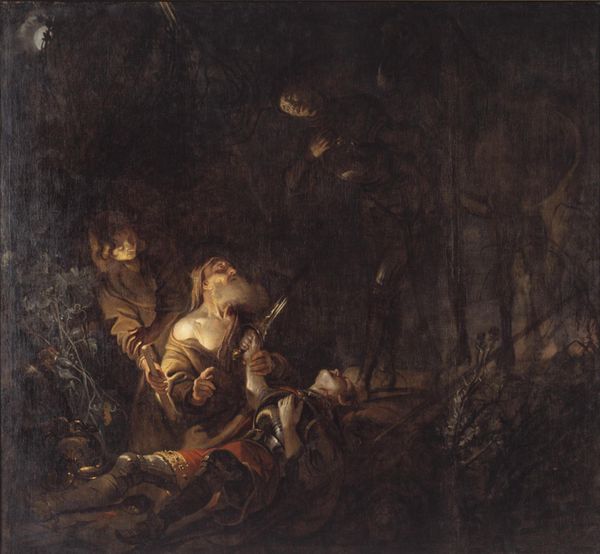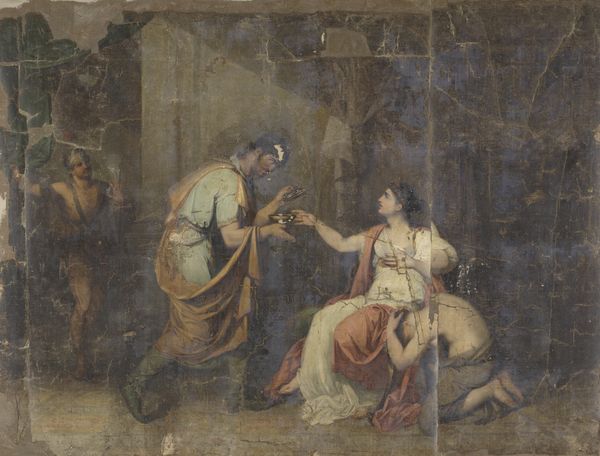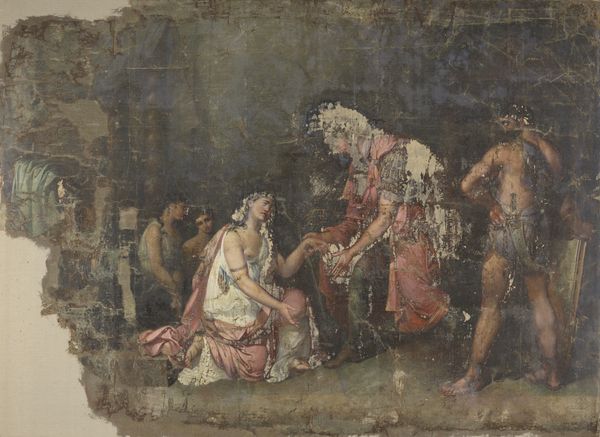
painting, oil-paint
#
portrait
#
baroque
#
painting
#
oil-paint
#
charcoal drawing
#
figuration
#
oil painting
#
mythology
#
history-painting
Copyright: Public domain
Editor: This painting, "Study for The Thorny Path" by Thomas Couture, looks to be oil on canvas. It depicts figures pulling a cart. There's a sense of theatrical drama and the human struggle seems prominent. How do you interpret this work? Curator: From a materialist perspective, consider the societal context of Couture's time. This piece speaks to the relationship between artistic production and class structure. Who were Couture's patrons, and what did they value? The brushstrokes themselves tell a story—loose and expressive, suggesting the speed and perhaps the pressures under which it was made, blurring any neat boundaries between high art and mere illustration. Is this emphasis on a certain kind of virtuosity meant to convey the intellectual and manual skill of the artist, a skill attained through training available to only a small percentage of the population at the time? Editor: That’s fascinating. So, instead of just focusing on the mythological narrative, you're drawn to the social and economic forces that shaped its creation and reception. But, where exactly do you see evidence of labor represented here? Curator: Labor is present not just thematically—with the figures pulling the cart, highlighting their physical exertion—but also in the very facture of the paint. Look closely. Do you see how the visible brushwork, the artist’s hand, emphasizes the process of making? It rejects any illusion of art existing separately from the material world and artistic practice, which relies on networks of dealers, patrons, and markets. Also, consider Couture’s studio assistants: what kind of labor went into preparing the materials with which Couture composed this "Study"? Editor: So it’s about expanding our understanding of what "work" the painting embodies... Curator: Exactly. How consumption is inextricably linked to production, then, influencing the aesthetics and themes we observe within "Study for the Thorny Path." It’s not just a painting, it's a product of a complex set of socio-economic relations. Editor: I see your point; it definitely gives me a fresh way of approaching it. It goes beyond just aesthetics to question the social framework around art making. Curator: Precisely. Analyzing art through the lens of materialism pushes us to critically assess labor practices and who dictates the standards of what makes an artwork great, inviting broader discussions about consumption in culture, and beyond the aesthetic qualities often considered sufficient when interpreting this subject matter.
Comments
No comments
Be the first to comment and join the conversation on the ultimate creative platform.

